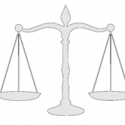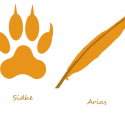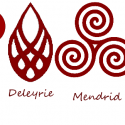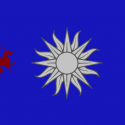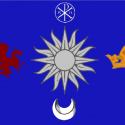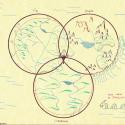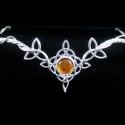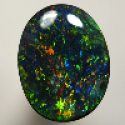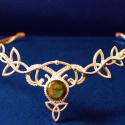-
Common Knowledge
The Lore is constructed from a series of bonds, oaths and laws that are woven into the very bloodlines of a certain group of people, thus making them Lorebloods. Every Loreblood is bound in service and support to the Lore, and the Lore reciprocates with protection for Lorebloods and their loved ones, but also with gifting them whatever they may legitimately Claim. The Lore must always maintain balance for these Claims, and might not interpret the Claim the same way the Claimant did, but it will never fail to give the Claimant whatever he may ask for (by its own interpretation). The Lore looks out for its own, just always in its own way rather than anyone else’s
Within the Lore whoever seeks to bargain with another must abide by the other’s laws for the duration of the bargain
A Loreblood is someone who has either a Dragon or Fae (both called Purelores) in his direct bloodline.
A Winnowing is when a sufficiently powerful group would kill many Lorebloods at a time. Historically this was done to Slate them and bind them in service to that group (make them Kuthri), but a recent Winnowing was aimed at extermination instead. Even though it ultimately failed, the loss of life was terribly high.
The Blood measure age in eight year sections. Until your eighth birthday you are a child or cub, with no responsibilities and no authority. From eight to sixteen you are a youth or fledgling, learning and growing. From sixteen to twenty-four you are a young adult, expected to begin experiencing the responsibilities and authorities of your family, but not expected to be particularly wise. At your twenty-fourth birthday you are a full adult, completely responsible for yourself and those under you and expected to take on all responsibilities and authorities and it is understood that your behavior will honor your people.
A Master is a Loreblood who understands the nature of the Lore well enough and has the humility and wisdom to be very cautious with it, to be an able and fair judiciary among other Lorebloods. Because of the Master’s understanding he is able to foresee what price he would be asked to pay for his Claim, and possibly bargain for another of at least equal value or drop the Claim entirely (also a Master may rescind the Claim of someone under his Authority just as he would one of his own, if he both makes a sufficient argument against it and offers a price for it). A Master need not have his Blood up for it to have the same effect, whatever he says counts as a Claim, thus why Masters are chosen for discretion.
A Claim is a wish, promise, incontrovertible statement, order (if he has the Authority) or some other absolute declaration that is made by a Loreblood when their Blood is up. All Claims are enforced by the Lore, but in the way that the Lore chooses to interpret them, which is not necessarily in the way the speaker meant. It is impossible for a Claim established by the Lore to not become true, but because the Lore must always be in balance, a Claim costs the Loreblood something that the Lore deems to be of at least equal value to whatever was Claimed. For instance: A Loreblood Claims the life of another, that other dies, the Loreblood dies to pay the Blood DebtIf a Loreblood dies with a Claim to, about or by them unfulfilled they respawn near the place they died, by the third dawn after their death, at one third the age their previous body was, in a body that could technically be a clone of their old one (same DNA/same Blood, but it might look different since clones are never perfect copies), with random knowledge, memories, and personality intact (the younger brain may influence their actions). This is what it means to Renew.
When a Loreblood or the loved one of a Loreblood is killed in a way the Lore finds unjustified or malicious a Blood Debt is created. A Blood Debt always creates a Seeping. If the killer is a Loreblood then it is the killer who bears the Seeping. If not, then the Seeping is borne by the closest Loreblood relative of authority to the person who was killed (say in a family with several foster siblings, where only one is a Loreblood, should the one of the other children be killed, the resolution of the Seeping would fall to the Loreblooded one). The bearer of the Seeping is given a grand total of eight cycles to pay the Blood Debt. When the Blood Debt is paid the Lore considers the Seeping Resolved and the bearer is permitted to heal whatever harm was done by it.
A Seeping is a wound to the soul of its bearer, created at the initiation of a Blood Debt. Essentially the bearer’s humanity is slowly seeping out of him. The Debt’s bearer has seven Cycles in which to take life from the person who created the Blood Debt. If he fails to do this he is given one final Cycle in which he may personally pay the debt with his own life (by any means short of suicide) or something of equal value, though this is rarer. If after the conclusion of the eighth Cycle, the Loreblood has failed to resolve the Blood Debt, the Seeping is passed to the next Loreblood of sufficient authority with ties to the first, and with the Loreblood losing the last trace of humanity and becoming a Purelore.
A Cycle is the span of 281 days. This has ties to the other realm's calendar where a year is 280 days (based on pregnancy), split into 7 months of 40 days each. Thus the Cycle is a year and a day by the Blood.
A Purelore is a Dragon, a Fae, or a Seeping allowed to bear fruit. The newly minted Purelore belongs to whatever Clan (Dragon) or House (Fae) their ancestry came from.
The Blood is very potent. When someone is drawing on his Blood, that means he is using his Lore Bond to do something. For instance if someone is a Lord of a House (Vraya) or Head of a Clan (Kai) he can call on the Purelores who owe him fealty to do something for himSigns when a Loreblood is drawing:If the blood is visible it will glow in the color of his heritage (gold for Fae, crimson for Dragon, a mottled blend of the two for both)if they are being passionate, it sometimes carries over by the veins visibly glowing that color through the skin or sometimes in a very great and intense passion (such as absolute fury) their whole being will be alight like a candle in a glassAlso anyone who does not have similar ancestry will be burned by touching the Blood while it is being drawn on (like with touching an exposed live wire). This wound will not heal unless a Loreblood draws on the Lore to heal the injury.There are two ways to heal. One is to make a Claim to heal the person and let the Lore choose its price. The other is to take the injury onto yourself and so both Claim and pay at once (the Lore asks for at least equal, bearing the wound of whomever you wish to heal is equal in the eyes of the Lore, thus by taking the injury you are already paying the price)When someone is drawing on the Lore his pupils will also change to glow the representative color of his ancestry (when he has both it will look like a bonfire seen through a sheet of diamonds){An extrapolation of the second attitude is exemplified by Delahc: to make a Claim that for a set period of time, whatever pain would fall to one's friends (or whomever else is chosen) comes to oneself instead. Part of this is that the Lore ensures that you must live and be able to take these pains until the end of your Claim, so that while it may not be exactly what they would have endured it is something that has equal value in the eyes of the Lore}
The Steward (whose rank/position is referred to as the Stewardship) is the highest ranking Master, of all three Bloods, the person who has been Master for the longest of any living Lorebloods and acts as a Supreme Court of sorts. If a dispute cannot be settled by two skilled and high ranking Masters it falls to the Steward to settle the matter. None save the Lore itself has more authority in matters of the Lore. The Steward also acts as the ultimate head of the Lorebloods (like Israel's Judges) and makes those decisions that affect all Lorebloods everywhere. Also is the one most responsible for maintaining balance between all involved parties.
A Unicorn is the symbolism and title of those who act as healers, foster blessings, and generally encourage the spiritual health of any place they go to, these are not bound in loyalty to anyone, but are honored as Holy People by all.
Gryphon is the symbolism and title of those who run around protecting Unicorns, crushing curses, generally going toe to toe with monsters and winning by (the skin of their teeth) ruthless cunning.
A Battleborn is (simply enough) a Loreblood who is born on the site of a battlefield. The more recent or significant the battle, the more of a pull this creates in the Battleborn. This means that whenever those the Battleborn are loyal to are at war, or in a fight of any kind (country at war or friend scrapping in an alley, doesn’t really matter) the Battleborn is drawn to the fight and feels an unrelenting urge to go, to do whatever he can even if that’s not much. To physically keep a Battleborn from the field, especially one he would seek out under normal circumstances, is considered psychological torture (one example had a Battleborn being kept locked away for study for at least fifty years covering both World Wars and if the Loreblood had not been a Master it’s entirely possible that event would have sacrificed the Loreblood’s sanity). A Battleborn will feel at home with his allies during a war (his unit will be his home for all intents and purposes), and his blood will sing with the fight when he sees action. He is far more likely to intervene in alley fights, bar brawls, and muggings, for not only does he have an unerring instinct for the place and timing of trouble (especially in what he considers his home territory), but he will be inexorably drawn to it. He is also highly likely to take Delahc for his unit, because he will very quickly come to consider them as his people and under his protection.
Authority is granted by the ranking of one’s House or Clan, which is enhanced by things such as proximity of one’s bloodline to the Steward, and number of recognized (acknowledged as such by any Steward living or dead) ‘heroes’ coming from one’s Clan or House. All Lorebloods, from the Steward down to the newly conceived child have the same amount of power, but not equal amounts of Authority. Each House and Clan has a gift or skill specific to that House or Clan. A member of a higher House or Clan is able to use the abilities of all Houses or Clans with less Authority than theirs, though with significantly more effort.
Each has authority (and subsequent responsibility) in their main territory and all that is native to it. This grants some ability to manipulate and communicate with anything they have authority over, but also means that whatever they influence influences them proportionally.
The Ioca flower looks like a cross between a bird of paradise and a daylily. The leaves are dark orange and red, while the petals are light orange to gold. The fruits are amber or honey colored, translucent, smooth berries, resting between the petals. The fruit (or the juice thereof) can be used for extraordinary healing, whereas the roots, when dried and crushed, make a potent poison. The berry's potency only lasts a few days when taken from the plant, though it may go longer if preserved in the juice or sap of the petals. With proper Authority and purity of purpose one may be given one of the plants, and by growing it around where they sleep, ensure that it will last so long as the one to whom it was given lives.
While the Wild Hunt does not adhere to any discernible schedule, it is always made note of. Every member of the Blood is on some level a hunter at spirit. Whatever they may pursue - wisdom, justice, wealth - they seek with all their heart, for that is their way. They are made to hunt, and they must hunt, for something, at some point in their lives. The longer it is put off, the stronger this instinct will be when it bursts from its dam. As such, during a Wild Hunt, they are all drawn inexorably into a vicious attempt to wipe out anyone the leader of the Hunt deems guilty of crimes which cannot be atoned for against the Lore, the Blood, or those under their aegis.
Purelores and Lorebloods with appropriate abilities and skills are able to craft an object to which memories may be bound, recording the facts, as obtained, for future reference. These are always as flawed and biased as the perspective which records them, but the more facts it keeps, the greater the likelihood of an accurate memory set. It is a simple tool to help guard against complete loss in the case of Renewing too young (if a Renewal brings the Loreblood/Purelore below a certain age threshold it's called a blank slate Renewal, because they lose all holdover from their previous identities, and sometimes even cancel Claims).
A sufficiently experienced Master, given the right Blood and Authority, may be able to negotiate the terms of his demanded vendetta, even in the face of a full blown Seeping (that is, if he finds a vendetta that satisfies him, without spilling any blood, and makes a sufficiently convincing argument, even a Seeping cannot stop him from his right to rescind the Claim. For example: a woman is raped, but after the man dies finds she is pregnant, she can protect that man's heir by claiming that her vendetta is fulfilled in refusing to give him or his memory any claim to the child. By taking it as her's alone, she steals life from him, and can argue that this is as good as repaying him with blood, so his child/heir need not suffer the punishment for his wrong). This is a very tricky, rare situation, the ramifications of which are never immediately clear, but it is possible under the right conditions.
Anyone with ties to the Lore is considered of age at 21 cycles (approx. 16 solar years).
Peacekeepers: Each race has those that are in charge of punishing any who would cause unjust grief between races (i.e. Dragon slayers usually have Blood ties to Rakesh) or within their own race. If something is purely within a single House or Clan it is dealt with by the Vraya or Kai respectively, other than that it is turned over to the Peacekeepers.
Adopter groups: Each race has those that are in charge of collection/distribution of the humans and Lorebloods who get taken in by a different race. They test any Claimant to the (usually) child, and find the home that best suits all involved.
Each Clan or House has its Kai or Vraya respectively, the highest ranking Kai or Vraya is Sovereign for his/her/its people, the Sovereigns are equal in Authority to one another and second only to the Steward. The Steward coordinates with the Council which is made up of all the Vrayari and Kairi.Originally there were going to be seven Just Judges or Holy People to represent Humans on the Council, but the first Judge was assassinated before she could seek out any of her peers and no one has been able to finish her work since.
Among Purelores you will never find a vegetarian. The idea of eating only plants is just one of the things about Humans that simply confuses them. Lorebloods might take more after their Human side on this front, but will generally favor heavier spices or seasonings than a pure Human might.
Purelores do not get pregnant, but instead use their blood and symbolism to create their children. Fae soak a seed in the appropriate blood, bury that seed, and when it blooms the Faeling is borne in the plant’s blossom. Dragons pour some of their blood onto a very hot fire (like lava) to create an egg that eventually hatches into a Drakeling. Lorebloods can have children in the manner of Humans, unfortunately, the Purelore method of creating a child minimizes the Human aspect of its instincts, which contributes to mental instability.
Fae draw life from being around life, and suffer harm from being around death. It’s not the remnants of these events but the events themselves, thus Fae’s desire to be present for a birth and peoples’ fears that Fae would steal the babies. Also a source of stories where Fae would lure a human into their own realm; they don’t actually steal the life, but exposure to other sources heightens their own vitality.
There is an Acme bag in a randomized location. It has unlimited space, you will immediately find exactly what you are looking for (of anything it already held/you put in), it never gets full and doesn't take up much space...it also vanishes as soon as you lose physical contact and as there is only one in the world, you have to find it before you can use it.
Names are significant as promises or declarations, sometimes the name itself can be a Claim. The name acts as a description of either something the child will one day grow to do, or as a statement of what or who the child already is. The common definition of a name is: Promise, Prophecy, Protection, Power.
In-verse: if one encounters 'talking' animals or birds of any kind, that's a Sidhe or Arias in his chosen form. They do not lose their ability to communicate, their enunciation, however...might be an issue.
Physical descriptions for each House apply mostly to members of the Vraya’s family
Vraya Seliegh and Vraya Unseliegh are married, as such the Lore almost sees the two Houses as one, leading to the heightened abilities of Unseliegh.
Purelore drakes do not eat what humans would consider food. Instead they consume metals and stones; and where some drakes prefer raw or near raw material, those ores that have been in use longer are more seasoned and therefore more palatable to other drakes. Any that are not used as fuel end up purified and slowly push to the surface of the Drake as a powder-fine shell on and between the scales.
Drakes can take human form for a day, a cycle, or a lifetime. No more, no less.
Drakes have no native gender, but if it has taken the form of a human in the past the drake is locked into that gender any time it takes human form in future, and there may even be some emotional or personality carryover when it returns to its natural form.
Purelore Drakes are asexual and aromantic, unless there has been a full Seeping in their Bloodline, then there is a chance that they will have mild romantic considerations.
Drake pupils are vertical slits when they are born, but as they grow older (and larger) these slowly shift into round pupils. It's one way to tell if you are dealing with an adult. Another is that the Drake's wings only start to come in as they reach puberty and are of the proper size and proportion when the Drake becomes an adult.
The traditional way to refer to a relative is to travel the line of relation from yourself to that person; for instance: instead of saying 'my great grandfather' one would say 'my father's mother's father' or 'my father-mother-father', or instead of cousin one would say 'father-brother-son'. This is generally only used in the most formal setting or by the oldest of Lorebloods and Purelores, as - while very specific - it can become exceedingly complicated equally quickly. Another old formality is the various races calling the others Cousin (which may be why they created a more distinct method in the first place).
“(that is) the way of things” a common way to refer to how the Lore works for those who don’t/can’t know
“my people” often, though not necessarily family. This refers to those a Loreblood has chosen, for whom he would freely sacrifice his life, whether they care anything for him or not (for example, the ones for whom a Delath makes his oath)When the Lore refers to giving your life that is very different from giving your death. You only die once (unless you’re going to renew, and then it has even less value), but to give your life is to give every breath and heartbeat for the rest of your life. Since you have to renew this decision every moment, potentially for years, it is seen as much more valuable a sacrifice than simply your death (precious as that one is)
“things are made to be as they should” *the Title tennet* essentially, if one acknowledges a bond or title, the Lore then enforces that acknowledgement.
For example:if a Loreblood calls someone his best friend then the Lore physically prevents him from acting towards that best friend in a way that he does not believe friends should behave. So if he believes that someone would never abandon a friend, then declares someone his friend, he will be physically incapable of abandoning his friend in any way, even if siding with them is foolish, dangerous, or counter to his own beliefs.
Since a leader is chosen to serve the people, anyone put into a position of leadership feels and acts it more as an indentured servitude than any chance for one-upmanship. For a Loreblood to be an absolute sovereign is to be a slave to the needs of the people, no matter what his personal will or wish may be. *this latter is also tied in to the Lore’s methods of balance, one of which is rights=responsibilities, they are inseparable* -
Fae Houses
Fae think almost entirely in words, and value beliefs above all other ties. They don't care who you are tied to but what you think, and if it sufficiently lines up with what they think, they will consider you relevant and care for you.
Their linchpin is Ideas.
Seliegh:-
Vraya: Thalee (f), Fae Queen
Abilities: light walking, preservation/decay, weave of the world
Appearance: Physically similar to Dragon Age elves, taller than humans, gray or blue eyes, blonds and redheads, tan golden or rosy complexion, freckles possible
Association: Woods (day)
Heraldry: Oak
Peacekeepers: See Common Knowledge
Unseliegh:-
Vraya: Mearaan (m), Lord Consort
Abilities: Shadow walking, illusions, seer
Appearance: Physically similar to Dragon Age elves, taller than humans, green or brown eyes, brown and black hair, pale olive or porcelain complexion, freckles unlikely
Association: Woods (night)
Heraldry: Wolf
Sirene:-
Vraya: Selena (f), Thalee's right hand
Abilities: Enthrall (can grant any one wish in return for fealty/life)
Appearance: Firmly in Uncanny Valley, just too slender and long in lines to be human, no visible distinction between iris and pupil
Association: Coastal/Waters
Heraldry: Palm
Sidhe (seethe):-
Vraya: Saetrell (f), black wolf animal form, Mearaan's right hand
Abilities: Shapeshifting (mammal)
Appearance: Range from similar colorations/textures/silhouettes to animal forms, up to anthropomorphized form depending on frequency of transformations
Association: Beasts
Heraldry: Paw
Arias:-
Vraya: Linuthe (f), goshawk bird form
Abilities: Shapeshifting (avian)
Appearance: Range from similar colorations/textures/silhouettes to bird forms, up to anthropomorphized form depending on frequency of transformations
Association: Birds
Heraldry: Flight feather (the kind used for quill pens)
Orlish:-
Vraya: Naritue (f)
Abilities: Never lost/Mental map
Appearance: Dwarvish (beards are male only)
Association: Hills
Heraldry: Violet
Mallan:-
Vraya: Pip (m)
Abilities: Limited transformation of nonsentient, not self
Appearance: Any fairy tale creature/person three feet or shorter, wide variety
Association: Valleys
Heraldry: Apple
Adopter: See Common Knowledge -
Dragon Clans
Drakes think almost entirely in images, and value loyalty above all other ties. They care primarily about worth, and will easily put Clan ties ahead of any ethics. Anything is acceptable for the good of the Clan that does not part you from the Clan. Their Claims come in the form of movement or art, they are the ones who taught the Orlish about how to make Enchanted items.
Their linchpin is Loyalty.
Rakesh:-
Kai: Caedwen
Abilities: Ability to manipulate weather (favor upon storm crafting)
Appearance: Classic/High/Great Drake (never smaller than a large house)
Association: Sky
Heraldry: Red (for all Drakes, see Heraldry below)
Peacekeepers: See Common Knowledge
Makhemmel:-
Kai: Ylmaree
Abilities: Elemental manipulation (classic: water, fire, earth, air)
Appearance: Wyvern
Association: Mountain
Deleyrie:-
Kai: Kellyn
Abilities: Empathy/Telepathy (receptive mostly)
Appearance: Adults range from wildcat to tiger in size. They have elliptical wings (think the shape of a raven) rooted near the mid-torso, high on the body close to the spine. Close to the body the tail is narrow and catlike, but soon the fin spreads into a shape reminiscent of palm branches. Large feet, more paw than claw, rest at the end of slender, sweeping limbs which are only rarely scaled. They have shorter, more rounded heads than most other Drakri, with only one horn on the headplate (most have a pair) in which the curve - if any - is subtle. As they have less scales (usually pearlescent/opalescent) overall than most the shell has more influence on their color, they usually wind up with a variety of tempered steel tones.
Association: Stars
Adopter: See gen. knowledge
Mendrid:-
Kai: Calmor
Abilities: Oceanic anomalies (i.e. Doldrums, Tsunami, etc.)
Appearance: Sea Serpent/Monster
Association: Ocean/Seas
Note: Mendrid is very isolationist
Varkir:-
Kai: Valeska
Abilities: Psychometry
Appearance: Lesser Drake (look like Great Drakes, but never larger than a draft horse, and with different colors/patterns)
Association: Canyons
Ilaath:-
Kai: Dhorvah
Abilities: Manipulation of light and shadow
Appearance: Celt/ Serpentine
Association: Caves/Tunnels
Svirkan:-
Kai: Anteevil
Abilities: Influence vitality and health (positively or negatively)
Appearance: Rakesh wings, needlepoint Rakesh heads, with short Ilaath bodies, long necks and hooked (think arrowpoint or spear) tails
Association: Tundra/Desert -
Heraldry
-
The Lore Realm
-
Stats and Character Building
This requires a d6 (six sided die) and minor coordination with the DM.
DEX, CHA, WIT, STA: 1d6 + (1d6)(#lvl)
HP: 50 for lvl 0 + % of 100 for ea. subsequent lvl
$, NW: (% of 78)(mental age)/(physical age) times 100 for NW, times 10 for $
INT, Luck: % of 100
Abilities: roll % of 100 for favor (i.e. 60% favor=anything above 40% attempt can't completely fail); 75% chance of success for your own House/Clan and any you outrank; 50% chance of success for abilities within your race but outranking your House/Clan; 25% chance of success for an ability outside your race.
Based off of D&D/Skyrim: STR+CON=Stamina, INT+WIS=Wit, and instead of Illusion, Conjuration, Restoration, etc. I have Heal, Fix, Change, Break, and Warp (roll 2 d6s ea.). Restoration would be split into Heal and Fix (according to sentience of restored), with Break for Destruction, Change for Alteration, and Warp for both Illusion and Conjuration, since with Lore, they're tied.
All successes and failures will be based off a percentage roll, with bonuses: 2% for each regular point, 4% for each point with Mastery, and an additional percent per level. So a level one Master would get 5% bonus on any percentage roll covered by one of his bonuses. The Stats acquired will act like favor: the higher the stat, the lower the possibility of complete failure, or the better the quality of the action.
Any other abilities (if present) usually associated with Fae or Dragons belong to whichever House or Clan, respectively, is highest at a given time.
With each proper level up you have a chance (only one) to switch two of your Stats, with a percentage roll.
Height needs to be ft'in" and weight in lbs.
Humans will not have Racial Bonuses. Instead they will roll a d12 (or two d6s) and apply those bonuses for any Human Stat or to their Abilities.
There are three rankings of specificity:Lorebloods: Direct promises, oaths, and incontrovertible Claims. They can lie if they're careful, but cannot rescind a Claim, and have no forewarning of its price. Their Authority does not reach outside of their own circle.Note: children fall under this category, with the minor exception that their Authority touches only those they are both related to by blood, and consider familyPurelores: Anything they say counts as a Claim, they struggle to tell the difference between a deliberate lie and simply being wrong, and while they cannot rescind, they have a vague instinct regarding the price. Each is responsible for anything under its Authority, but nothing else.
Masters: Only possible with Lorebloods. Any form of communication counts as a Claim, they are utterly incapable of lying, but have ability to forsee the price of their Claim at will, and - if they decide the price is unbearable - negotiate the price to something else or rescind the Claim entirely. Masters are responsible for anyone with less Authority than them in their area.
Characters who are the children of two or more hybrids will have to do a percentage roll for potential genetic complications from this.
Group Toolbar Menu
